Polar has launched a website aimed at selling their sports/fitness/physiological algorithms to other companies. With this new venture, they aim to make it possible for other sport/fitness/etc. companies to leverage Polar’s algorithms. This could be used in areas such as sleep, activity tracking, training load, recovery, and more. In other words, if you wanted to make your own watch, called the Banana Watch, you could do so and utilize Polar’s health/sports algorithms to power it (note, don’t make a sports tracker called the ‘Pear’, that already exists).
This licensing road is well traveled for other Finnish companies, with Firstbeat previously doing this for many watch and wearable manufacturers over the years. Of course, Garmin acquired Firstbeat about 2.5 years ago, and the current Firstbeat site doesn’t exactly give the impression they want business anymore (there’s not even a contact option, though on their privacy/legal/accessibility pages, they do have e-mails there, so I suppose you could use that). Still, in checking with Firstbeat/Garmin, they did confirm they do still indeed license Firstbeat algorithms, including new business opportunities.
In any case, all of this semi-recent change clearly opens the door for a company like Polar to step in and fill that void with their own (and similar) slate of algorithms.
As a quick bit of background and explainer on the segment, historically, we’ve seen many companies license Firstbeat algorithms in the wearables space. For example, Suunto, Amazfit, Huawei, Mont Blanc, Casio, and many others have used such algorithms for years (at CES in the past they even had a massive display full of them, along with a huge website listing every device and which algorithms). These can be for simple components like VO2Max estimation, or calorie expenditure. Or, they can get more complex like Training Status, Race Predictors, and so on. Typically you’ll see companies that don’t specialize heavily in sports tech devices pick up the basic and mid-range algorithms, whereas the more sports-tech-focused companies aim for the more complex algorithms.
Generally speaking, companies license these algorithms on a per-unit volume basis, usually with discounts for bundled sets of algorithms (e.g. a suite of things designed to work together). They report these sales volumes in a catch-up method down the road as they sell devices. Certainly, that can lead to scenarios where competitor companies are afraid to report unit sales volumes (such as the case once Garmin bought Firstbeat, or now with Polar’s algorithms). Though practically speaking, most companies roughly know how many units their competitors are selling.
Finally, there aren’t many players in this space. There are some players like Valencell and LifeQ, but they also focus heavily on bundled sensor+algorithm offerings. For example, buying an optical HR sensor package and then getting various algorithms with it. Still, they have standalone offerings too. For example, Suunto has shifted to LifeQ for its optical HR sensors in recent years (from Valencell). But all of these companies tend to flirt with a host of business-to-business offerings, sometimes kinda appearing as spaghetti thrown at the wall. Not in a bad way, but usually they see business opportunities in adjacent health/fitness/sports/medical areas, and try and plug those holes.
In any case, with that background out of the way, let’s talk about Polar’s offerings.
Polar’s Algorithms:
So, what’s Polar offering? Well, according to their site they’ve got 25 different algorithms that are available today, these algorithms are chunked into the following categories, according to Polar (their descriptions below):
– Activity: Tracking activity 24 hours a day helps customers learn how they move in their everyday life
– Training: Monitoring training gives your customers in-depth insights they can act on, and work to improve
– Performance: When your customers know their key performance metrics they can focus on how to perform better
– Sleep: Improve your customer’s sleep insights to ensure they rest better and are fully recharged each day
– Recovery: Guide your customer’s optimal recovery so they can be ready to take on their goals for the day
– Wellness: Help your customers restore balance to their lives through holistic well-being and rhythms
As you can see, these are pretty generic categories, without a ton of details. One can imagine sleep would include not just sleep times, but probably some of Polar’s various sleep metrics around ANS, HRV, and sleep phases. It might even include SleepWise components. It’s hard to say. Below these categories they have some details on the next steps and how their process works:
All of this makes sense and is fairly straightforward for algorithm-focused companies. As you can see, they’re not just giving a snippet of code (or compiled binaries) and calling it done. Rather, it’s also validation that the algorithms are doing what you’d expect. Some of these things aren’t super obvious at first glance. Sure, testing what time you went to sleep and woke up is easy. But having test cases for training load/recovery is much more complex, and wanting to ensure that your activity/workout data pipeline is correctly feeding the algorithm is important.
With that in mind, I reached out to Polar, hoping to get slightly more information on Step #1 above, specifically the feature descriptions. These high-level descriptions certainly wouldn’t be confidential. Unfortunately, Polar said they don’t have anything more publicly to show.
Just for context, competitor Firstbeat lists not only the algorithms on their website, but also detailed descriptions and user interface examples (hey, they might not list a way to contact them, but at least they list what they have for sale – with fairly specific detail). Here’s one snippet of the 26 algorithms that Firstbeat says they currently offer:
Of course, whether or not this is Firstbeat’s whole catalog, I don’t know. Some of it is semi-new, but other Firstbeat-driven features/algorithms are missing. That might be because they haven’t updated the website, or, because Garmin has decided not to license those. For example, we don’t see HRV Status features or Jetlag Recovery, both of which are driven from the Firstbeat team.
Now, setting all that aside, one common thing I hear from people (no matter the company) is that all these algorithms are “junk” or “useless”. And essentially, I bucketize those complaints into three basic categories:
A) Legitimate cases where the algorithm just kinda sucks and is heavily shortsighted for most people (Whoop Recovery score is a good example of this)
B) Legitimate scenarios where the algorithm has edge/use cases that don’t work well for a smaller portion of the population (e.g. Polar SleepWise not accounting for naps, as an example)
C) Cases where users don’t like or understand the data output, or misapply it (an example being Garmin’s previous training/status that is/was easily misunderstood)
For most of Polar’s algorithms, I find they tend to do a good job of what they say they’re going to do – if, and this is a big if – you actually let them, and are willing to understand them. In some ways that’s on the company to make easier to understand. It doesn’t matter how good the algorithm is, if it’s easily misunderstood or misapplied. Also, keep in mind that in this context I’m setting aside the underlying data stream (e.g. optical HR sensor or GPS/accelerometer data if applicable). That matters in cases, again, such as previous generation Whoop devices where the optical HR sensor was so bad that the end-state strain/recovery data was useless. These days, that’s less of a factor (to Whoop or most others).
Linked off of Polar’s algorithm licensing page is their Polar Research Center, which until recently I’d never even seen before. This is quite cool, and has tons of links to both internal and external studies. Even the internal studies whitepapers are far better than what Garmin (or Whoop, or Oura) publishes. Sure, they’re mostly only going to publish ‘good’ data, but hey, at least they’re publishing details of how the feature works beyond just a marketing paragraph.
In fact, if I were to take a guess here, my assumption is that most of the algorithms they’ll license will probably line up near perfectly to the tidy little list shown under the ‘Whitepaper’ section of this site:
That list linked above would most closely align with what I’d expect Polar to offer/license, and would be most competitive to what Garmin/Firstbeat offers.
Going Forward:
I think this strategy actually makes a ton of sense for Polar. There are a lot of companies that have leveraged Firstbeat over the years, but as Firstbeat is no longer independent, it makes sense that these companies would prefer not to give Garmin either revenue or sales numbers (even if the unit volumes are pretty much known anyways). Polar has a solid slate of algorithms that do compete very well in the marketplace, and would be super appealing to companies like SRAM/Hammerhead or Wahoo, which lack any physiological features at all. While some consumers might prefer it that way, the market reality has clearly shown that having at least some of those features is required to compete at the same price point.
But it’s also appealing to companies that are direct competitors. Companies like Amazfit, Suunto, and others could see Polar as a better option in terms of either pricing, or competition. After all, if I was Suunto, I’d much rather give Polar the money than Garmin. Sure, it’s a drop in the bucket, but in most cases it’s better to have more smaller companies than less. And plus, they’re both from Finland – that has to count for something. Sauna credits perhaps?
It’ll be interesting to see where this goes, and how long it takes for Polar to have their first public customer. Obviously, Polar wouldn’t have spun up this business unit/offering unless they already had some interested customers (or perhaps already signed customers). I’m sure time will tell.
With that, thanks for reading!
FOUND THIS POST USEFUL? SUPPORT THE SITE!
Hopefully, you found this post useful. The website is really a labor of love, so please consider becoming a DC RAINMAKER Supporter. This gets you an ad-free experience, and access to our (mostly) bi-monthly behind-the-scenes video series of “Shed Talkin’”.
Support DCRainMaker - Shop on Amazon
Otherwise, perhaps consider using the below link if shopping on Amazon. As an Amazon Associate, I earn from qualifying purchases. It doesn’t cost you anything extra, but your purchases help support this website a lot. It could simply be buying toilet paper, or this pizza oven we use and love.



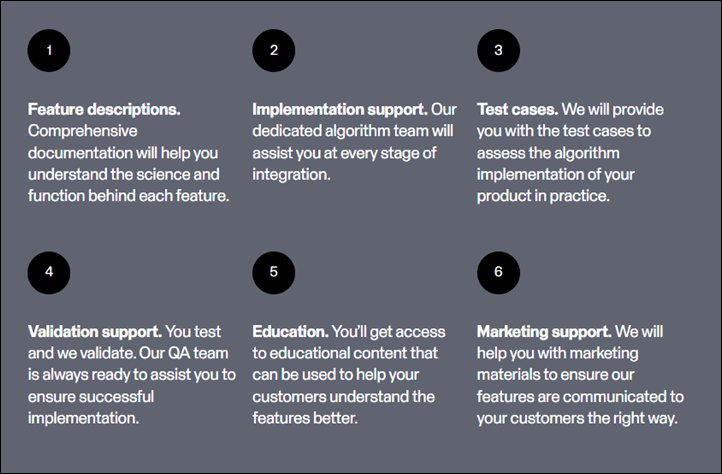
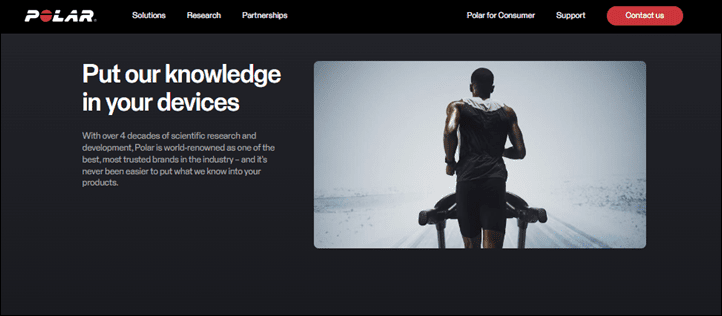
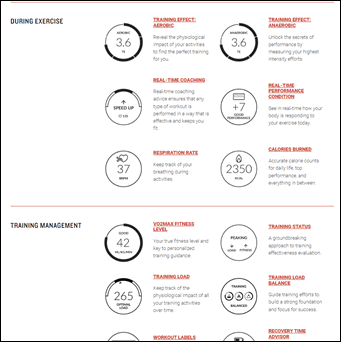
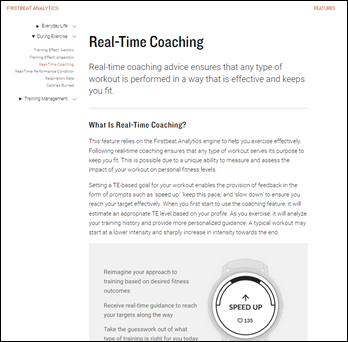
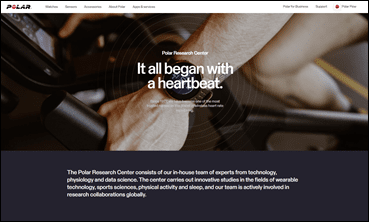
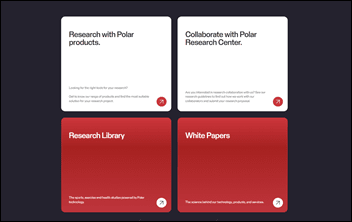
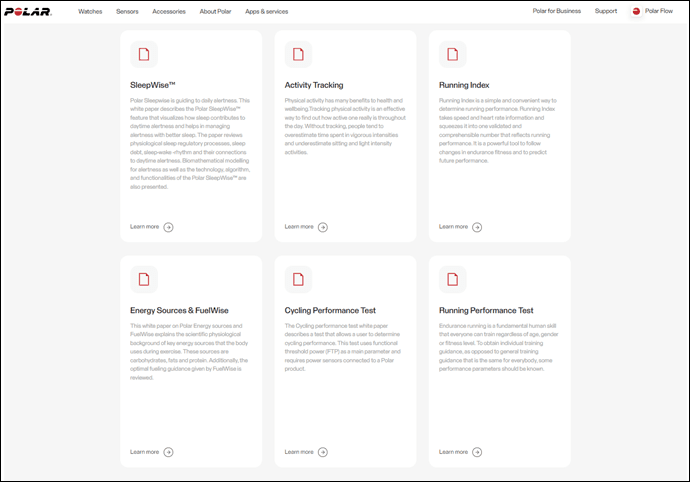
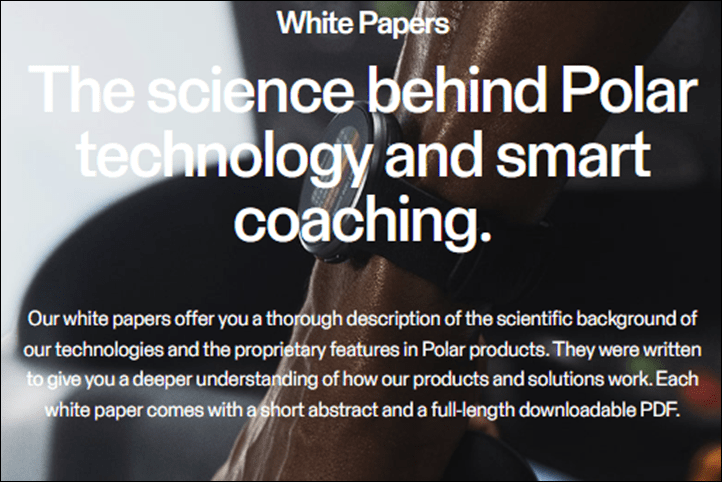
















HI Ray,
if I’m not mistaken Firstbeat was (is) as well a finish company.
Polar should update their app. The hardware is pretty good, the software don`t.
The classical tech world makes a distinction between products and services: Windows, say, is a product that competes with other operating systems like MacOS and Linux whereas something like Microsoft Office should be a service that is available on all OS products or platforms (and now is). The general view is that it is difficult to be both a product company and a service company as incentives invariably conflict.
In Polar’s case, the watches are products that compete with other watches, and their analytics are being set up as a service that is available for licensing to other product manufacturers. Perhaps this decision is an indication that Polar feels that it can no longer compete effectively in the product space. That Firstbeat has been acquired gives it an opening in licensing; the challenge is that it will need to license all its analytics to be credible as a service provider if it also continues to sell watches (the incentive conflict above).
Kubios Analytics is also a finnish company with scientific alghorithm based on HRV data, selling the licenses….
I’m tellin’ ya, it’s basically a Finnish HR & analytics cartel up there!
Sounds like a good decision to me.
I’ve always been a fan of Polar products and hope the H10 will stick around. I just don’t see a viable path forward for them when it comes to hardware. Going forward, I doubt anyone will be able to sell volume in the watch space except for Apple and Garmin. And when it comes to heart rate it looks like people like me who get horrible results from wrist based monitors are the exception now. A couple years ago half the group was wearing a chest strap on shirtless summer long runs. Last year there was only two of us left.
If Polar actually had a wrist HRM that did Gymlink (along with BT) I would buy it, like, yesterday. Wrist based HRMs are just soo much easier to deal with.
About dang time, I’ve only been shouting this for years now here and elsewhere, LOL. (not that they listen to me/end users, but business wise it was obvious years ago they were slipping backwards in the “device feature competition” areas, IMO, but their training knowledge was worth something to others that don’t have the legacy of fitness science they do. hopefully this opens new doors for them!
I wish them luck, so that they live long and prosper.. :)
I hope this move will create money for them to stay alive and create good products.
Joke aside, it has been years since they have done a real thing in cycling realm. Cs600x was the last big thing in my eyes, the m460 was just recoated knowlesge with ninor strava support and bt under the hood. There was a small step for having sth big that can do mapping, but was actually miss. (it was great pronise with touch display etc..)
Polar knowledge is undeniable when i think of training with hr. But the wrapping around it is not sexy enough. The polar flow was a good move, but the actual devices are not charming enough (for me). Eg vantage m vs garmin 945. Mostly speed. (let’s forget the gimmick that 945 gas also onboard) Secondly hr training is not utilized enough in polars. I think people want to be connected with their training capabilities over seasons or targets. Ownoptimezer idea was good to adopt for a certain training but the big picture was a miss. Sth like race widget from garmin should have been implemented thus utilizing the sleepwise and fuel information… let’s dream big, somehow knowing the nutrition and weight change should be there also. That could be a game changer for polar and for as buyers if given on a competitive price.
Taken another way – (and I used to be a Polar ambassador) – could this be a sign of possible desperation for Polar, seeking any source of revenue? Not that there’s anything wrong with that, of course, but – anytime you a major pivot like this, it’s always interesting to try and divine the meaning or reasons beneath the obvious….
Wonder how they are doing as a company these days….
I’m not sure so much desperation, as rather just new revenue lines.
Certainly, Polar isn’t rolling in dough. If they play their cards right, this might allow them to refocus some other business efforts to make more competitive units, while removing non-competitive units from their lineup.
History tells us software is where it’s at. Hardware always seems to evolve into commodities based on spec’s and price. Plus it’s obvious Polar doesn’t churn new versions of watches nearly as fast as Garmin. They were always going to be on the back foot matching hardware with Garmin.
What was wrong with the Whoop recover metric?
It’s basically entirely based on your HRV score for that single night, which is silly for a lot of reasons. One, it’s easily impacted by any number of factors that won’t really matter the next morning. For example, if I have a glass of wine, it’ll slaughter that number. Yet if you look at HRV values, that impact burns off by morning. Sure, there are some sleep factors, but nothing major.
It’s why other companies (Fitbit, Garmin, Oura, etc…) trend that HRV value over a trailing period. Trends are more important here than specifics day to day. Second, sometimes you actually want HRV to depress, such as a hard training block. This doesn’t have any meaningful tie-in to Strain (workouts).
Third, it’s easily duped. I’ve literally has 20 mins of sleep on a 10hr redeye-flight from California to Europe, but because in that 20 mins of sleep my HRV value was high enough, it thought I was green and good to go.
In my review I outline a lot of issues with it. Sadly, none of which are solved.
Sounds like a good move especially since some of Polar’s metrics appear a lot more “solid” than Garmin’s/Firsbeat’s, particularly ANS recovery that’s always given sensible results on my Ignite compared to Garmin’s HRV that’s…well, a head scratcher most of the time with little connection to reality.
Do Hamnerhead users get access to FirstBeat algorithms through the integration with the Suunto app?
Suunto has been moving away from Firstbeat in recent hardware iterations…
That said, I haven’t worked out with a Suunto watch this month, but have with Hammerhead. Since I connected them, I can see them in the app, including some metrics like TSS/ATL/TSB. But that’s really it.
Wifey has a Polar and it just won’t sync the planned workouts from TrainingPeaks or Intervals.icu directly to the watch. Polar doesn’t allow it.
I can’t fathom this decision from Polar. I HATE this kind of walled gardens.
If polar would put all their algorithms into an Apple app for the Ultra watch it could be a game changer Ultra users. Of don’t make it like Polar beat which needs an heart rate sensor and phone to start workouts.
Yup, I’d agree – that’d do very well.
The WearOS suite is lagging behind dedicated fitness watch companies and even iOS for avid athletes. If they manage to borrow the strengths of Polar and integrate with other WearOS features, it might make a watch like Galaxy Watch 5 Pro, really “pro”. Imagine all those algorithms with native ant+/bt support on WearOS, that would be a great watch.
Looking forward for an in depth test of the new Casio GBD-H2000 :)
Me too!